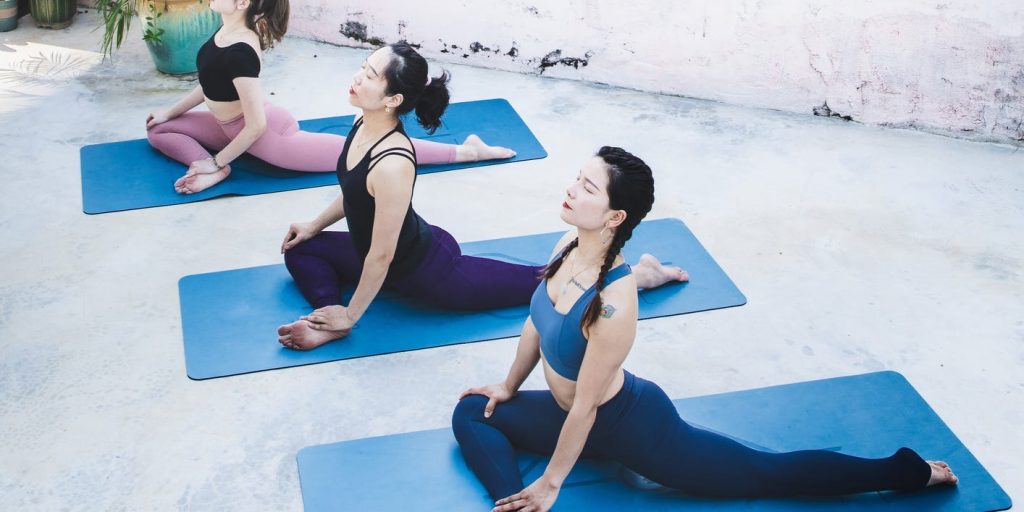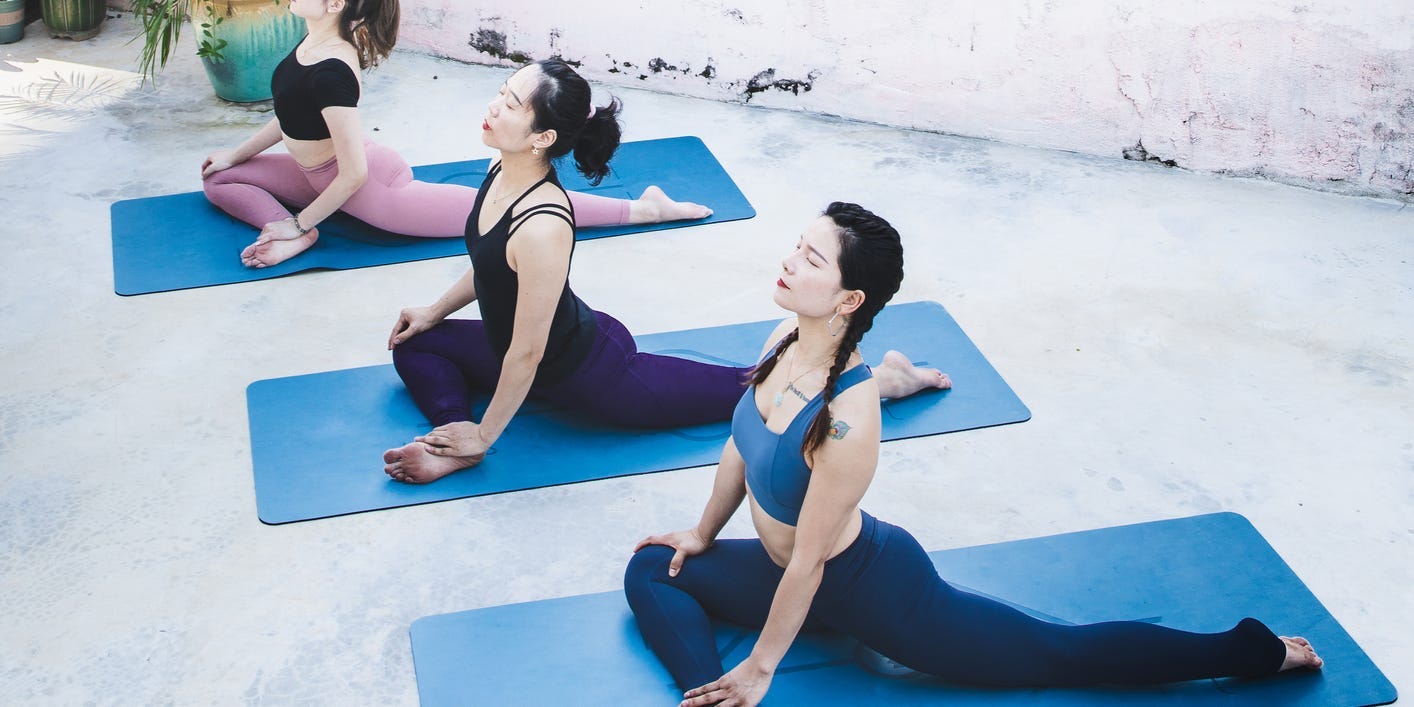
Kilito Chan/Getty Images
- Pigeon pose is a yoga pose that stretches your hip flexors and low back.
- Benefits of pigeon pose include increased flexibility, mobility, and reduced low back pain.
- if you can't do pigeon pose yet, try variations like sitting pigeon pose and supine pose.
- Visit Insider's Health Reference library for more advice.
Many people suffer from tight hips and lower back pain, in part due to sedentary lifestyles and long days sitting at desks, says Pierre Couvillion, the founder and director of Santosha School, a yoga and Ayurveda wellness center and school.
Regularly practicing pigeon pose – a type of yoga pose that doubles as a stretch – is a great way to combat those aches, since it increases hip flexibility and rotation, Couvillion says.
Here's how to safely practice pigeon pose and why you should incorporate this move into your regular stretching routine or yoga practice.
How to do pigeon pose
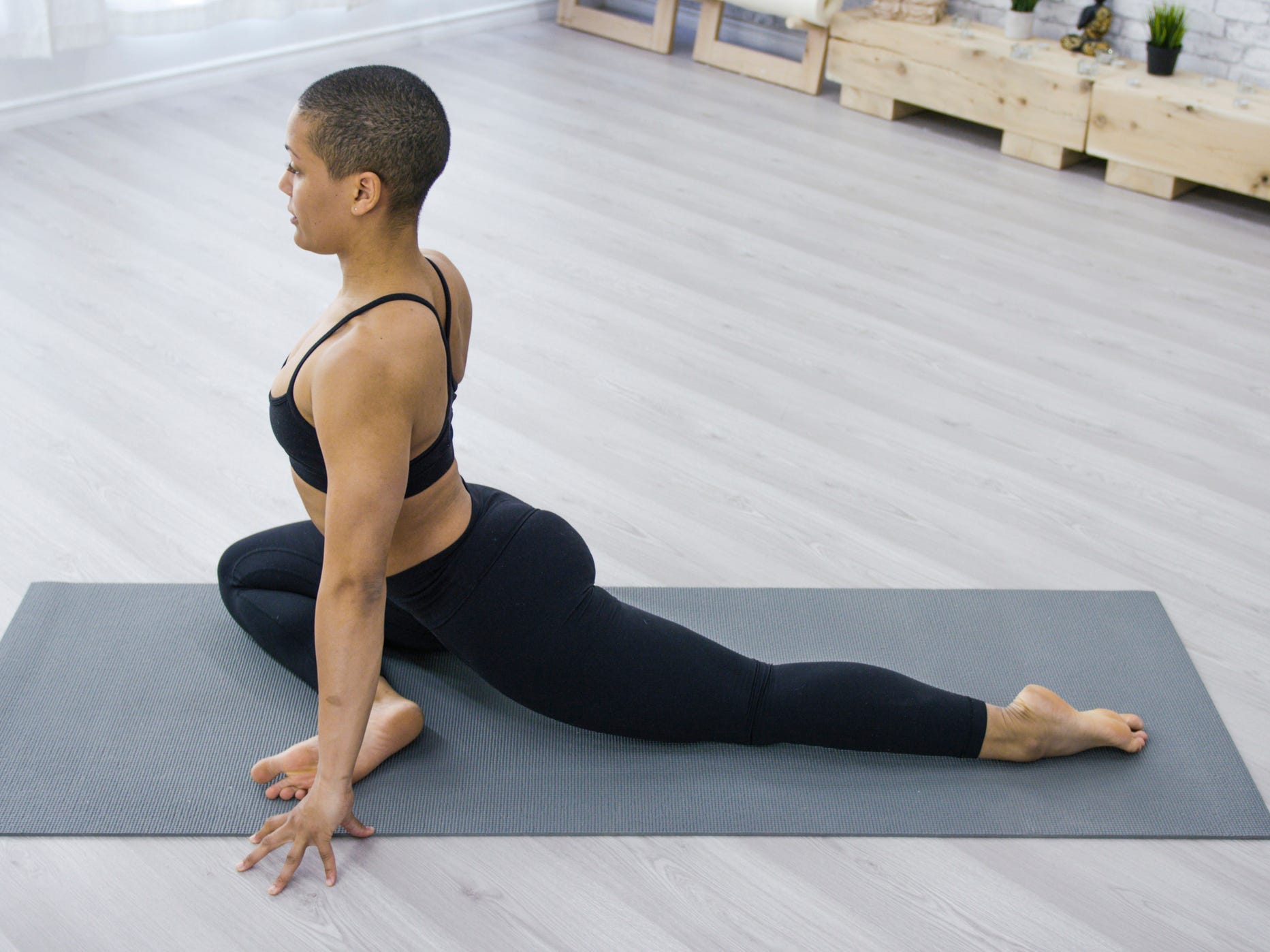
FatCamera/Getty Images
Traditionally, pigeon pose involves a position where both hips are flexed.
However, that's too much for most people in the West, who generally have tighter hips and aren't accustomed to hip openers, Couvillion says. Because of that, he recommends starting with a version of pigeon pose that involves flexing one hip at a time.
Here is a step-by-step guide to doing pigeon pose:
- Begin in a downward-facing dog position.
- Bring your right knee towards the outside of your right elbow, or as close to your elbow as your flexibility allows. Be sure to keep the right foot flexed during this pose to protect the right knee.
- Bring your right knee towards the floor, outside your right wrist. Allow your shin to angle toward your left hip.
- Bring your left knee to the floor, behind you.
- Gently lean forward until you feel a stretch in your piriformis
- Hold for a few breaths, then switch sides.
Pigeon pose variations
If you haven't tried pigeon pose before, you should start with the safest version of the pose and then work your way through the different variations until you're flexibility allows for the full movement. Here are three variations and how to do them, in order from safest to more advanced.
Non-weight-bearing variation
This is a great place for beginner's to start since you can tailor the intensity to your body. You don't need any equipment for this pose, but might like a mat or towel. Here's how to do it:
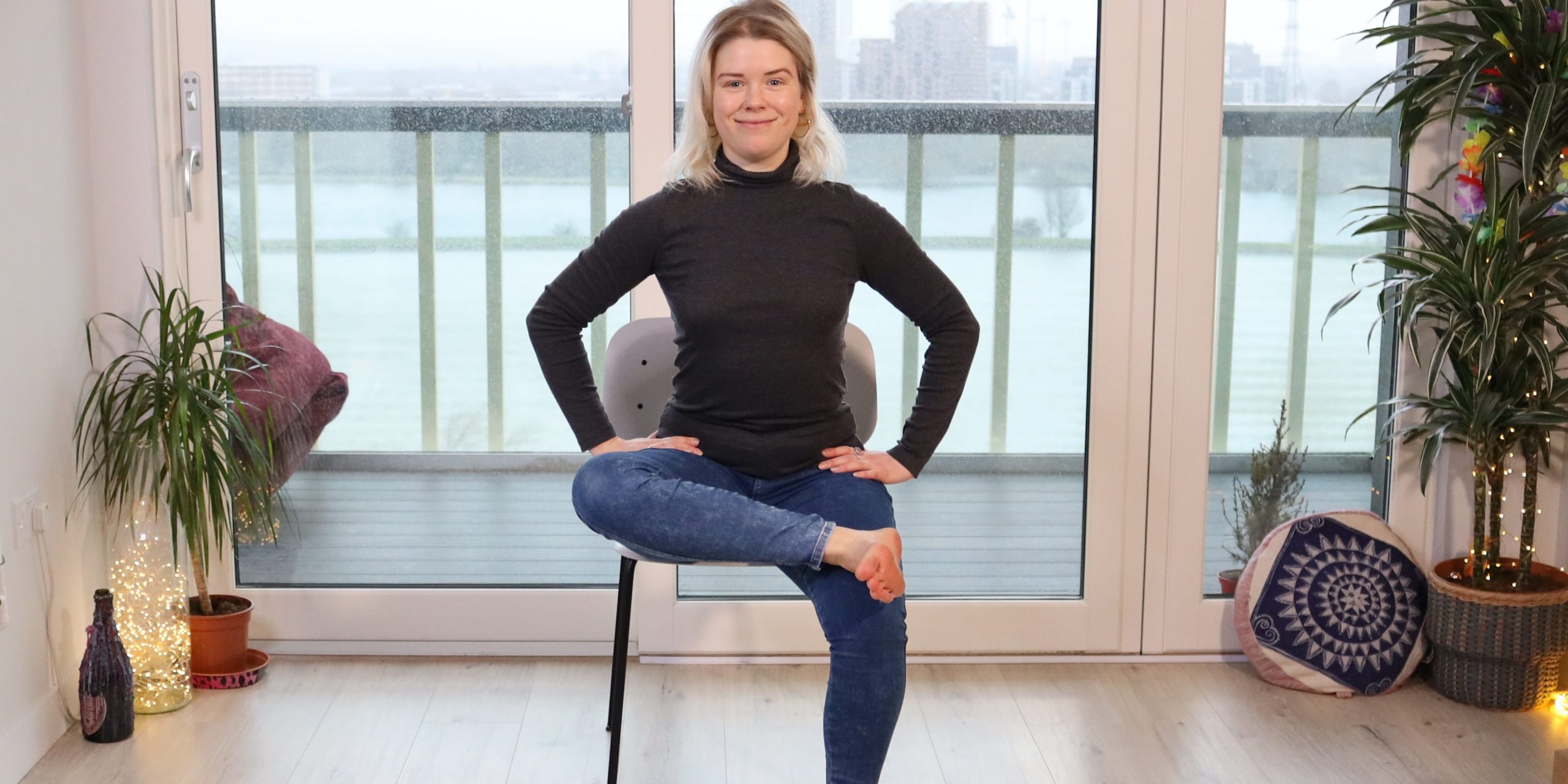
Rachel Hosie/Insider
- Sit comfortably. You can sit on the floor or in a chair.
- Beginning with the right side, flex your knee towards your chest.
- Flex your right foot.
- With your flexed foot, rotate the ball of your big toe toward your chest. This will rotate your hip. It's ok if your hip doesn't rotate very far.
- Use your left hand to catch your right heel, lifting it gently toward the knee.
- Inhale, and press your knee away from you and to the side.
- Exhale and draw your big toe closer to your chest, if able. Hold for a breath.
- Repeat this ten times, then switch sides.
Supine
After getting comfortable with the non-weight-bearing version of the pose, you can try the Supine version next.
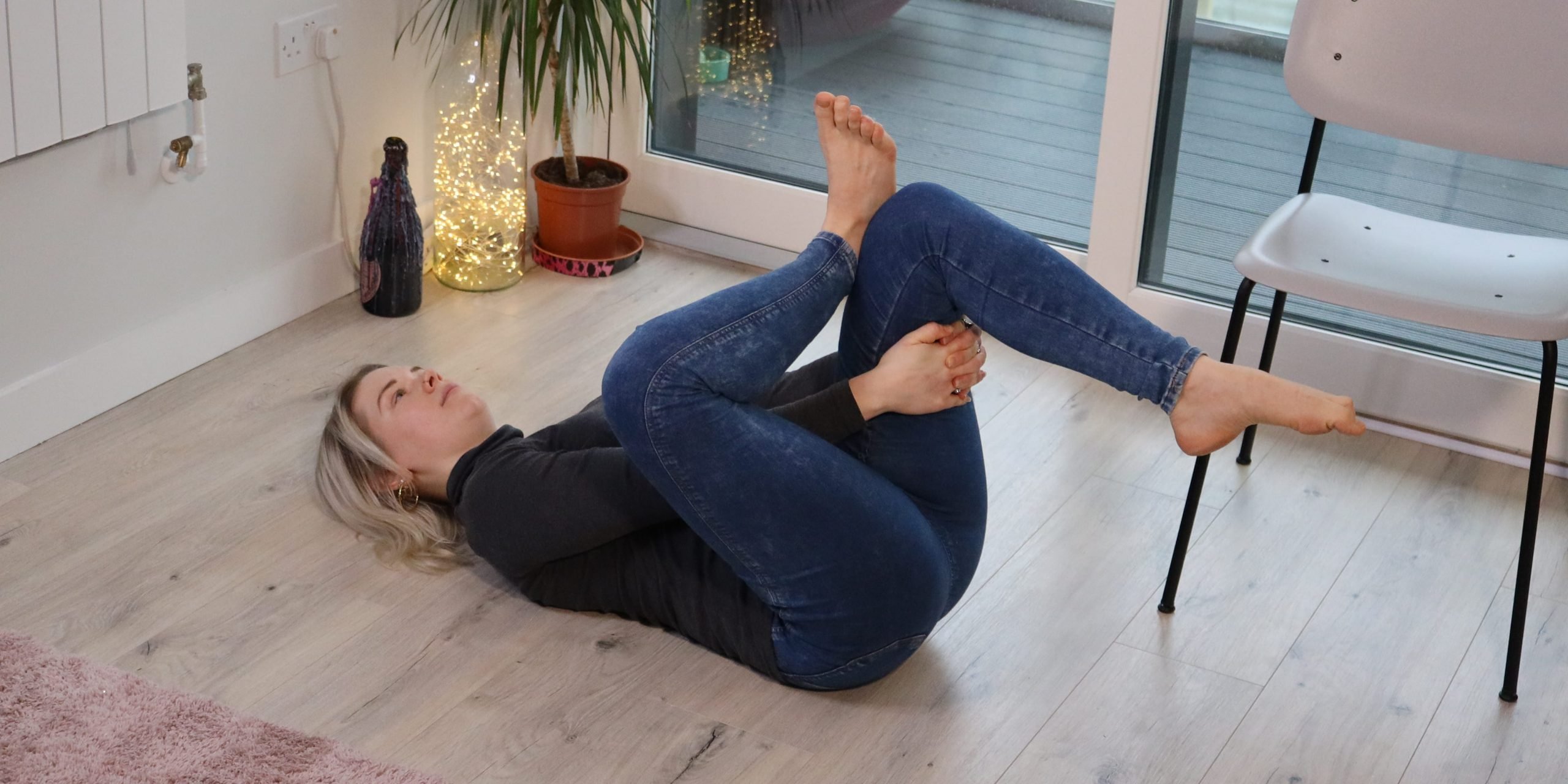
Rachel Hosie/Insider
- Lay on the floor, facing up.
- Place your right ankle onto your opposite thigh.
- Lift your left knee towards your chest.
- Reach through your legs with both hands and clutch your left shin.
- Pull the shin gently toward you, keeping the right foot flexed and the left foot relaxed.
- Hold for a few breaths, then repeat on the other side.
Seated
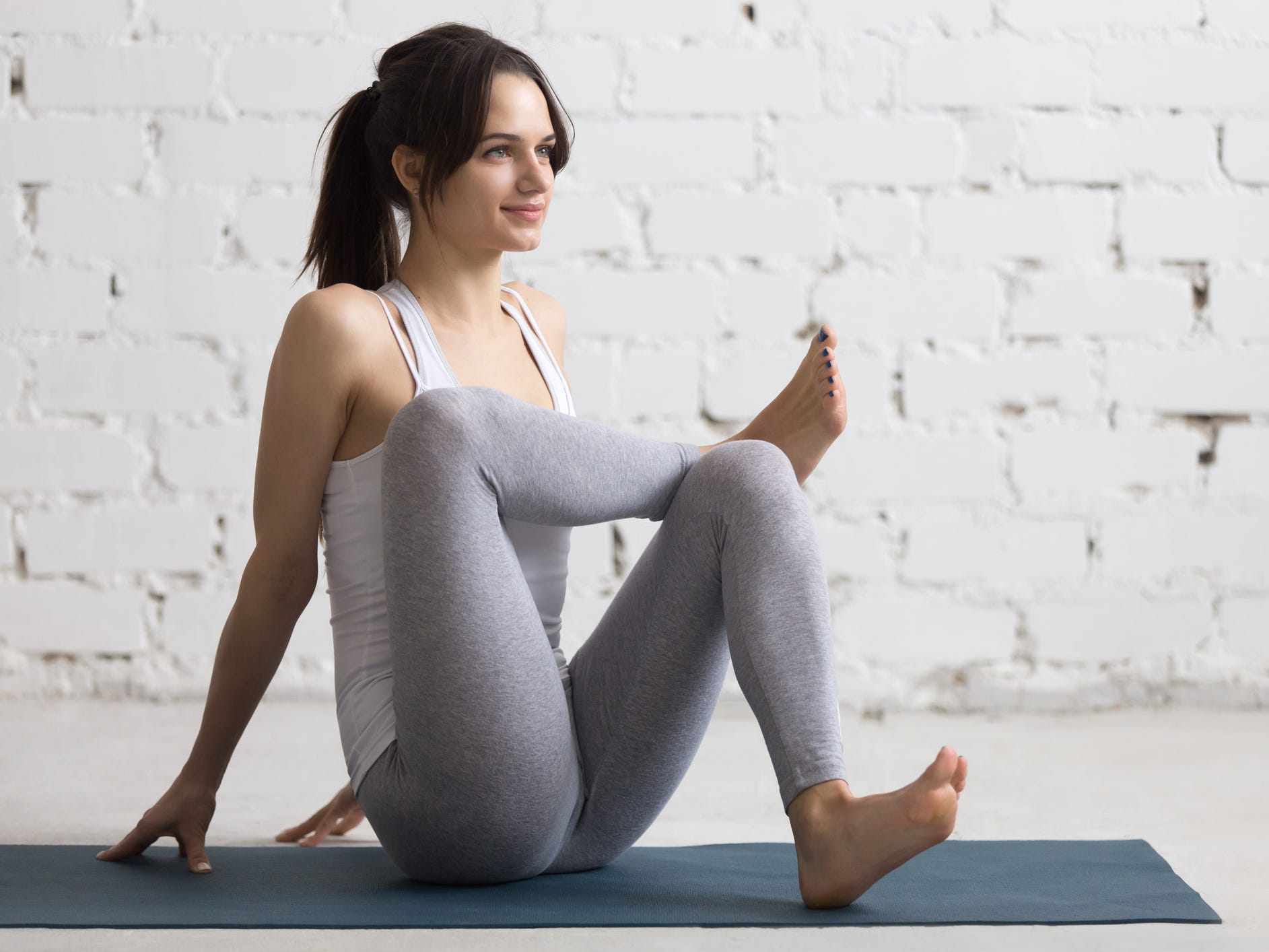
fizkes/Getty Images
If Supine doesn't feel challenging enough, you can try the seated version of this pose.
- Sit upright on the floor with your legs extended in front of you. Keep your back straight and hands behind your hips.
- Bend the left knee, keeping the foot flat on the floor.
- Bend the right knee and rotate the ball of the big toe toward your chest until the foot rests on the left thigh.
- Slowly sit up straight and draw the left shin toward you, increasing the stretch.
- Hold for a breath or however long feels right for you. Then repeat on the other side.
Insider's takeaway
Long days sitting at school and work mean that many people, including kids, have tight hips and low back pain.
Pigeon pose is a great way to counteract this while also improving flexibility and inducing relaxation.
However, beginners should stick to the easiest variation and then work their way up to full pigeon to reduce injury.
